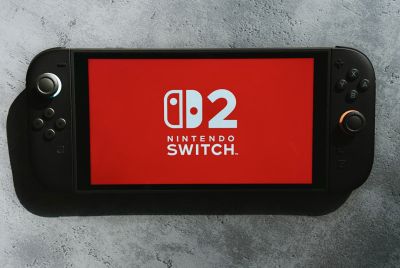Levelling The Playing Field: Enhancing Gaming Accessibility For Hearing-Impaired Players
50% of disabled gamers say that information on a game's accessibility has affected their decision to buy it

In recent years, the gaming industry has significantly improved accessibility for players with different needs. However, one area that still requires more attention is enhancing accessibility for hearing-impaired gamers, with many games nearly unplayable to 5% of the world's population, as revealed by Private Internet Access (PIA).
As gaming continues to grow as a universal platform for entertainment and community, ensuring that players with hearing impairments can fully enjoy and participate is crucial. This means going beyond simple subtitles and exploring creative solutions, allowing all players an equal and immersive experience. According to data from Scope UK, around 50% of disabled gamers say that information on a game's accessibility has affected their decision to buy it.
For hearing-impaired gamers, sound cues and audio-based instructions can often create barriers to gameplay. Whether it's missing out on environmental sounds or important in-game communication, these challenges can make certain games difficult or even unplayable.
To truly level the playing field, developers must consider inclusive design features that accommodate these players, from visual sound indicators to customisable audio settings. By prioritising accessibility, the gaming community can ensure that everyone, regardless of their hearing ability, has the opportunity to thrive and enjoy the games they love.
How Accessibility Tools Improve the Experience of Gamers with Hearing Impairments
Accessibility tools are game-changers for hearing-impaired players, enabling them to engage with games on a level playing field. These tools help bridge the gap created by the reliance on audio cues, ensuring that crucial gameplay elements are communicated visually or through other sensory means. For instance, many games now incorporate visual indicators for sound effects, such as footsteps, gunfire, or approaching enemies. These cues help players react to the game environment just as quickly as those who can hear the sounds.
Another significant benefit of accessibility tools is that they improve the overall inclusivity of in-game communication. Multiplayer games, for example, often rely heavily on voice chat, which can exclude hearing-impaired players from crucial team strategies. By offering text-to-speech and speech-to-text functions, developers ensure that communication is accessible to everyone, keeping all players involved. By integrating these tools, the gaming experience becomes more enjoyable, less frustrating, and more inclusive for everyone.
Accessibility Tools Available to Game Developers
Game developers have various accessibility tools at their disposal to enhance the experience for hearing-impaired gamers. One of the most widely used tools is subtitles and closed captions but with more advanced customisation options. Subtitles should be large enough to read comfortably, offer colour-coded text for different speakers, and include descriptions of significant sound effects. Closed captions go further, translating background noises and environmental sounds like explosions or distant dialogue into text.
Visual sound indicators are another critical tool. These can be as simple as an icon or a visual pulse that alerts players to specific audio cues like nearby enemies, alarms, or even music beats that might be important to gameplay. Many modern games offer customisable visual audio systems that allow players to adjust the types of visual notifications they receive and the intensity of those indicators based on personal preferences.
For multiplayer games, text-to-speech and speech-to-text tools make communication more inclusive. These tools automatically convert voice chat into text and vice versa, ensuring hearing-impaired players can stay in sync with their teammates without missing any action.
Lastly, haptic feedback—vibrations or tactile responses from the controller—can signify sound effects. For example, vibrations can occur when a significant event happens in the game, like an explosion or an incoming attack. When combined with visual indicators, haptic feedback allows players to experience sound cues in a more immersive, multisensory way.
Examples of Good Audio Accessibility in Video Games
Several games have set the standard for audio accessibility, offering features that improve the experience for hearing-impaired players. One standout example is The Last of Us Part II. This game provides comprehensive accessibility settings, including visual sound indicators, where players can see icons for everything from nearby enemy movements to gunshots. The game's subtitle options are also robust, with the ability to change the size, colour, and background to suit players' needs.
Another great example is Fortnite, which offers a "Visualise Sound Effects" option. This feature creates visual indicators representing nearby sounds like footsteps, gunfire, or chest locations. The game also allows players to adjust the size and colour of these indicators, ensuring that the visual cues are easy to spot during fast-paced gameplay.
Call of Duty: Modern Warfare has also embraced accessibility by offering extensive subtitle customisation options and visual sound cues that alert players to crucial audio information. In addition, its multiplayer voice chat is supplemented with speech-to-text functionality, making team communication more inclusive for players with hearing impairments.
***
Incorporating robust accessibility tools for hearing-impaired gamers isn't just an enhancement; it's necessary to make gaming more inclusive. Features like visual sound indicators, customisable subtitles, and haptic feedback ensure that players who rely less on audio cues can still enjoy immersive, action-packed experiences. By offering developers a range of accessibility tools and drawing inspiration from games that have already set a high bar, the industry can continue to evolve and make gaming an experience where everyone can thrive, regardless of their hearing ability.
© Copyright IBTimes 2025. All rights reserved.



















